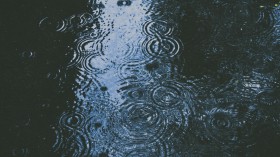Researchers have crafted the first generation of a robot that is a gardener and butler all in one. The Remotely Operated Gardening Rover (ROGR) will tend plants placed throughout any space station, taking care of menial tasks while astronauts focus on more important objectives.
ROGR is part of the University of Colorado's (CU) larger solution to NASA's eXploration HABitat (X-Hab) Academic Innovation Challenge.
"We're hoping to take advantage of what these and other students are developing and use it in future space missions," Tracy Gill, NASA's technology strategy manager at the Kennedy Space Center, explained in a press release. "This program is an opportunity to engage university teams in helping us develop new concepts."
According to NASA, ROGR is a small wheeled robot designed to wander a space station tending the needs of remotely monitored plants. It would also help the astronauts help themselves, delivering requested vegetables after gathering the ripest and most appropriate selections.
The plants, part of the Remotely Operated Plant Production System, would be scattered throughout a station, placed wherever there is room for them. This concept earned the overall project its name: "Plants Anywhere: Plants Growing in Free Habitat Spaces."
"The 'Plants Anywhere' approach is designed to help minimize astronaut workload," said graduate student Heather Hava. "This keeps them free to concentrate on more important tasks."
The idea of having plants virtually everywhere - making use of forgotten nooks and crannies - is also more easily integrated into a space station, as opposed to crafting a whole new facility or section, as would be required if NASA planned to expand its experimental VEGGIE system.
Of course, no one astronaut would ever be asked to keep track of every plant, especially if they would be so scattered. Researcher Dan Larsen explained that that is where the SmartPots, or SPOTS, come in.
"We envision dozens of SPOTS on a space habitat," Larsen said. "Telemetry in each SPOT provides data on plant condition to a computer display."
According to the CU team, the SPOTS can measure air and water temperature, lighting and levels of humidity and acidity, telling ROGR when their respective plant needs tending to and where to find it.
The CU team presented the whole of their "Plants Everywhere" project on June 23 to a group of NASA experts. They are one of five university teams selected to work on the 2015 X-Hab challenge.
© 2024 NatureWorldNews.com All rights reserved. Do not reproduce without permission.





